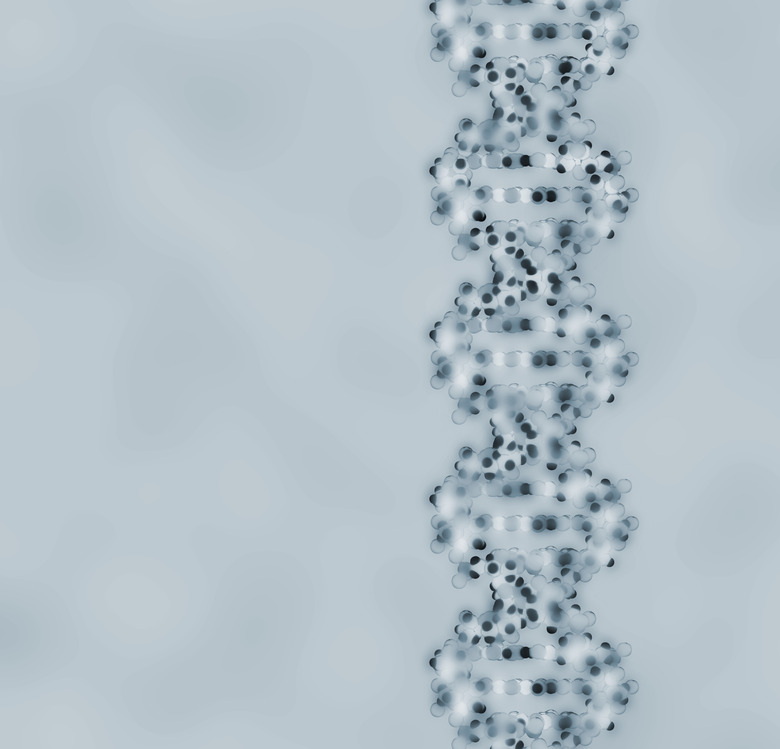All Of The Information Needed To Make Proteins Is Coded In DNA By What?
DNA is a long polymer molecule. A polymer is a big molecule built from many identical or nearly identical parts. In the case of DNA, the nearly identical parts are molecules called nuclear bases: adenine, thymine, cytosine and guanine. The four bases are often abbreviated A, T, C and G. The order of the bases — the specific order of A, T, C and G — contains all the information needed to build proteins.
DNA and Proteins
DNA and Proteins
DNA is a relatively simple molecule compared to the proteins in the cell. So one question scientists had was how a simple molecule could control the construction of the more complex ones. One example of the confusion: DNA is built from pretty much only four components, the nuclear bases, while proteins are built from 20 different amino acids. The answer was in the order of the bases.
The Genetic Code
The Genetic Code
If every nuclear base corresponded to one amino acid, proteins could only have four different amino acids. If it took two bases to correspond to the amino acids — AA, AT, AG and so forth — there could only be a maximum of 16 different amino acids. The answer is that it takes three bases together to control the assembly of an amino acid onto a protein. The three letter codes are called "triplets" or "codons."
Cite This Article
MLA
Gaughan, Richard. "All Of The Information Needed To Make Proteins Is Coded In DNA By What?" sciencing.com, https://www.sciencing.com/information-needed-make-proteins-coded-dna-what-12923/. 24 April 2017.
APA
Gaughan, Richard. (2017, April 24). All Of The Information Needed To Make Proteins Is Coded In DNA By What?. sciencing.com. Retrieved from https://www.sciencing.com/information-needed-make-proteins-coded-dna-what-12923/
Chicago
Gaughan, Richard. All Of The Information Needed To Make Proteins Is Coded In DNA By What? last modified March 24, 2022. https://www.sciencing.com/information-needed-make-proteins-coded-dna-what-12923/
